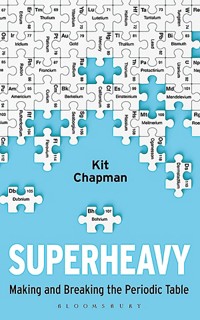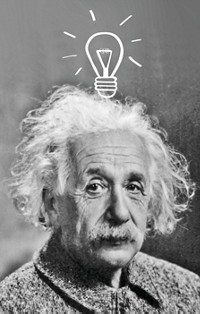Advertisement
Grab your lab coat. Let's get started
Welcome!
Welcome!
Create an account below to get 6 C&EN articles per month, receive newsletters and more - all free.
It seems this is your first time logging in online. Please enter the following information to continue.
As an ACS member you automatically get access to this site. All we need is few more details to create your reading experience.
Not you? Sign in with a different account.
Not you? Sign in with a different account.
ERROR 1
ERROR 1
ERROR 2
ERROR 2
ERROR 2
ERROR 2
ERROR 2
Password and Confirm password must match.
If you have an ACS member number, please enter it here so we can link this account to your membership. (optional)
ERROR 2
ACS values your privacy. By submitting your information, you are gaining access to C&EN and subscribing to our weekly newsletter. We use the information you provide to make your reading experience better, and we will never sell your data to third party members.
People
Movers And Shakers
Accelerator physicist Suzie Sheehy discusses how curiosity-driven research can change the world
Author of The Matter of Everything explains why it’s important to tell the stories of the scientists behind historical discoveries
by Ariana Remmel
May 7, 2023
| A version of this story appeared in
Volume 101, Issue 15

In her new book The Matter of Everything: How Curiosity, Physics and Improbable Experiments Changed the World, accelerator physicist and science communicator Suzie Sheehy connects the wonders of modern technology to the fundamental research of the past century that made it possible.
Sheehy tells the stories of 12 classic experiments in physics that transformed our understanding of how the world works. Anyone who has taken an introductory chemistry course will be familiar with many of the early chapters’ experiments, such as how J. J. Thomson used cathode ray tubes to discover electrons and how Ernest Rutherford and his students revealed the existence of the atomic nucleus using gold foil. Later sections of the book describe the gargantuan instruments that enabled scientists to detect for the first time elusive particles at the heart of the standard model, such as the neutrino and the Higgs boson. Through each tale, The Matter of Everything explores how the pursuit of basic science has led to unexpected discoveries in other fields. These findings now underpin cancer treatments, personal electronics, and even how scientists investigate the way lava flows deep below Earth’s surface. Sheehy carefully considers each of these breakthroughs through the lens of the people who defied the odds to uncover the mysteries of our universe.
Sheehy splits her time between the University of Oxford and the University of Melbourne, where she’s expanding the applications of particle accelerators in human medicine. She spoke with C&EN about why it’s important to look at scientific discoveries from the perspective of the experimenter and what The Matter of Everything can tell us about the importance of curiosity-driven research. This conversation has been edited for length and clarity.
Vitals
▸ Favorite particle: Neutrino
▸ Favorite scientific instrument: Particle accelerator
▸ Education: BS, physics, University of Melbourne; DPhil, elementary particle physics, University of Oxford
▸ Current project: Setting up a new lab to develop particle accelerators for applications in medicine
What inspired you to tell the stories of these historical experiments with the experimenters at the forefront of the narrative?
We as a society are a bit disconnected from the process of how science is done. Anyone who spent time in the lab will understand that a lot of it is frustration, failure, and feeling like you don’t know what you’re doing, intermingled with moments of joy when things work. I wanted to frame some of the big discoveries in physics within a narrative context that humanizes the way that science is actually done. We tend to ignore the human side of what it’s like to do science because we only publish facts such as methodology. We don’t publish the way it feels to do science. And that was very important to me to communicate.
How does approaching science history from a human perspective help us understand what it was actually like for the physicists in your book to conduct these revolutionary experiments?
The hardest part of researching the book was getting in the mind of the scientist as they were working at that point in time. What did they actually know? What had they observed before? What were the questions they were asking? I thought I knew the stories behind the experiments you learn in school: stories about the discovery of the electron, the gold-foil experiment, and the photoelectric effect, for example. But when I dug further into the biographies of these scientists and into the original papers, all this complexity revealed itself. Doing those experiments for the first time in the early 1900s was a much more complex affair than it is re-creating them now.We have this tendency to look back on these classic experiments with the knowledge we have today and repackage history into a neat, linear story where the outcome was inevitable. That’s extremely discouraging to students and early-career scientists who may feel like they are failing all the time because nothing is working. Realizing these world-changing, Nobel Prize–winning experiments were done despite the fact that the scientists felt the same way—that gave me a sense of belonging in the field.
You write about some of the most famous physicists in history—and many lesser-known contributors—with such intricate detail that it feels as though you knew these researchers personally. How did you go about researching these historical figures for the book?
As a writer, you want to be able to give color and depth to each character while remaining true to them. Biographies and autobiographies were really the mainstay of a lot of my research. I also read the original papers for each experiment, which gave me a lot of details that are normally left out. There are scientists in the book whose character is well known—people like Ernest Rutherford—for whom I could back up the anecdotes from original sources. And I felt at the end of writing the book that I knew what these people were really like.

The people who were really difficult to research were the women in the book. That’s because there’s a lot less of them captured in the literature—and even that literature can be biased. There has been a horrific underrepresentation and underacknowledgment of the contributions of women and people of color alongside a wider Western bias in science. I will be quick to say that the contributions of assistants and technicians have also been overlooked. For so long, the narrative of science has been one of great White men and the lone genius stereotype. Yet science is quite frequently built on relationships in which each individual plays an important role. So it didn’t make sense to tell the story without those people.
What can the stories of women in this book tell us about who gets credit in science?
There’s a term for this pattern of leaving out women’s scientific contributions to these fields—the Matilda effect. Science historian Margaret Rossiter named the term after Matilda J. Gage, an American suffragist who stood up and recognized that women’s contributions to industry were being systematically ignored or attributed to other people. Rossiter hoped that naming the Matilda effect would encourage people to actively reincorporate women’s scientific contributions into our stories and give these women their rightful place in history. It’s so important that we recognize that these aren’t a bunch of individual, unfortunate events that can be explained away: it is a systematic and almost a willful ignorance of the contributions of women.
One of the loveliest pieces of feedback I’ve had from readers is that the book has brought their attention to these women who they either had not heard of or had not understood the full extent of their contributions to science. And it also manages to tell my story as a woman in the physical sciences without me even having to tell it, because of the different biases and pressures that they face from society.
Is there anything these stories of overcoming obstacles can tell us about what makes a good scientist?
Looking back at these historical experiments now, we can see that there were many points when the whole enterprise might have ended if the scientists had just accepted that the instrument that they wanted wasn’t available for purchase, wasn’t going to work, or didn’t exist. Yet the scientists I describe in the book were so driven to get an answer to their questions that they were able to overcome barriers that I think would have stopped other people. There’s an essence in that which I find wonderful and was a common theme throughout the book. And when I really looked through all the different ways in which these scientists overcame these barriers to arrive at the discoveries we now revere, I was able to distill it down to three ingredients: asking good questions, the culture of curiosity, and the freedom to persist.
Asking good questions is about identifying gaps in knowledge and remaining open to the idea that nature could work differently than what we expect. The culture of curiosity is about fostering an environment in which people can follow their intuitions and curiosity about how the world works. I say “culture” intentionally because I want people to focus on the ways we interact with each other and how that impacts people’s ability to follow their curiosity. The final ingredient is the freedom to persist, which is about the practical, economic, and structural elements in our society that affect how we value long-term, curiosity-driven research. The big picture in this book is that if we can give people the time, space, and resources to pursue curiosity-driven research, it can lead to outcomes that we never could have predicted, ones that have huge positive impacts in our lives.




Join the conversation
Contact the reporter
Submit a Letter to the Editor for publication
Engage with us on Twitter